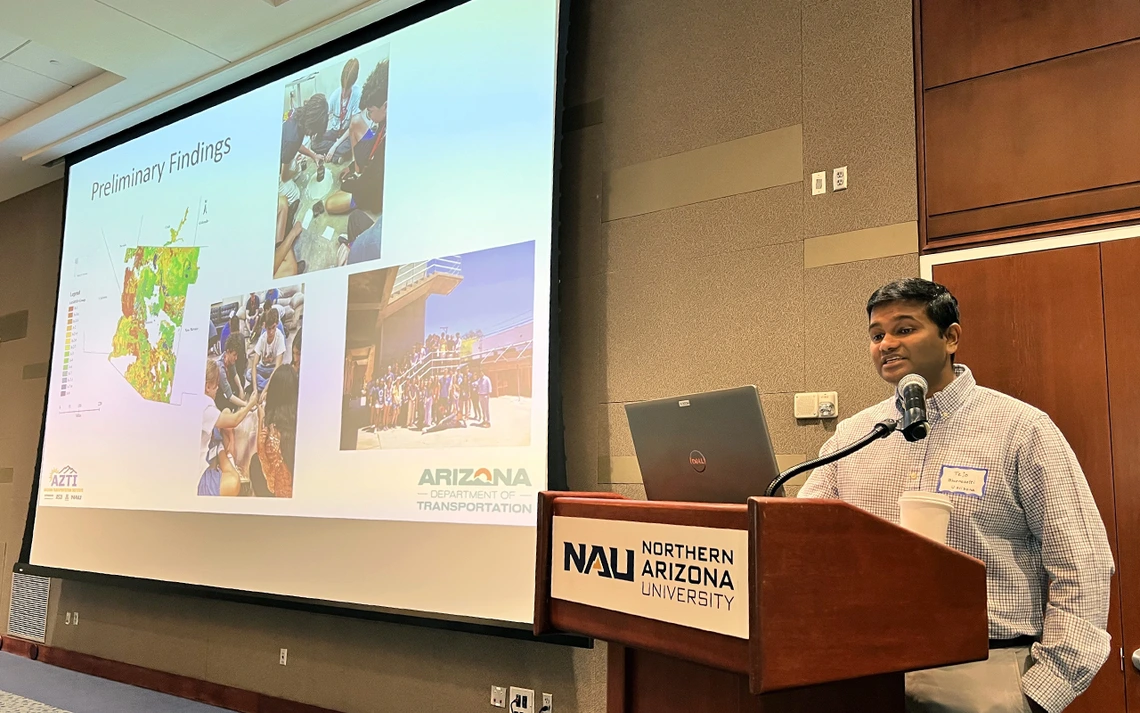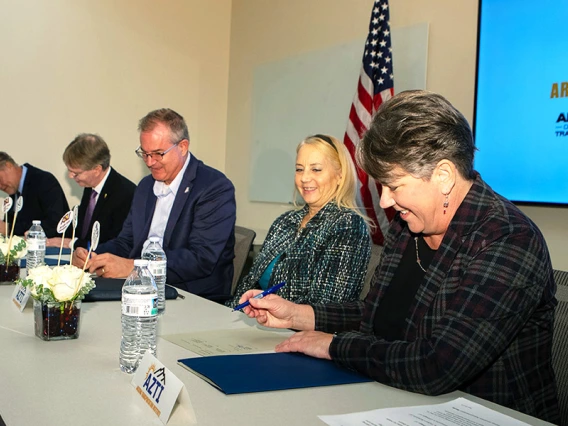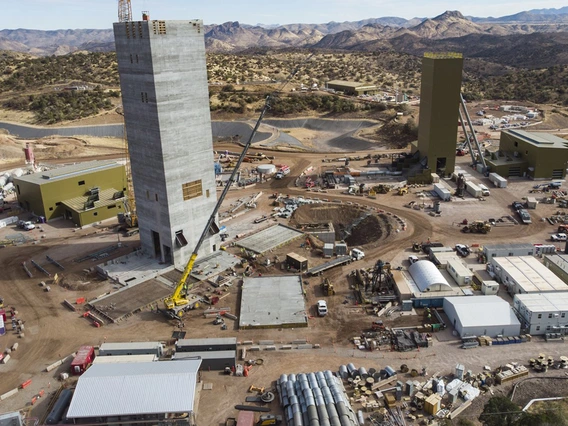University engineers fast-track Arizona roadway improvements
The state’s three public universities came together on Aug. 8 at the Arizona Transportation Institute Summit to discuss how far they have come with speeding up much-needed roadwork and reinforcing the workforce.

At the 2025 Arizona Transportation Institute Summit, U of A assistant professor Tejo Bheemasetti shows data associated with the number of battery-laden EVs on the road.
The state is looking toward safer, more durable roads within the next few years, thanks to the Arizona Transportation Institute’s fast-tracked infrastructure research.
“For us, the development of AZTI is a lifesaver,” said Greg Byres, state engineer and deputy director for transportation with the Arizona Department of Transportation, or ADOT.
Researchers from the state’s three public universities are tackling challenges ranging from electric vehicle infrastructure to native plant landscaping and safety management.
AZTI launched in 2024 with the University of Arizona at the helm. The tri-university consortium includes faculty members and students in the U of A College of Engineering and at Arizona State University and Northern Arizona University. With funding from ADOT, the Federal Highway Administration and the Arizona Board of Regents, AZTI has initiated more than 18 projects, some of which are already nearing completion.
Researchers presented their findings on Aug. 8 at NAU during the institute’s second annual summit.
Qualifying decisions with data
College faculty members Tejo Bheemaseti and Mingfeng Shang from the Department of Civil and Architectural Engineering and Mechanics were among those with projects close to the finish line.
Assistant professor Bheemaseti is using ADOT vehicle data to assess whether electric vehicles – which, because of their battery packs, are significantly heavier than gas-powered cars – are putting more stress on roads. For example, GMC's Hummer EV typically weighs about 9,000 pounds, putting it at about 3,000 pounds more than the comparable Sierra pickup.
The data analysis is expected to help ADOT better predict maintenance needs and costs as more EVs hit the road.
“We want to find out what impact this has on roads,” said Bheemaseti. “It’s long overdue.”
Assistant research professor Mingfeng Shang interviewed transportation departments across the country to establish the best ways to modernize ADOT’s data management systems.
“This effort will lead to more efficient and transparent transportation decision making,” said Shang. "Better-governed data enables more responsive public services, smarter infrastructure investments, and ultimately a safer, more equitable transportation system."
Making workforce a priority
To help ensure strong civil engineering and transportation workforce development, at least one student is working on each project alongside faculty members, explained Yao-Jan Wu, director of AZTI and professor of CAEM. Further, primary investigators are required to contribute to K-12 outreach.
“I hope to continue my career in Arizona after graduation, and this project has helped me gain a deeper understanding of the state’s transportation landscape," said Gabriel Geffen, a civil engineering doctoral student working with Shang.
Fortifying native plants against fire
Daoqin Tong, ASU professor in the School of Geographical Sciences and Urban Planning, and Yue Wang, assistant professor of systems and industrial engineering at the U of A, are developing landscaping methods to accelerate native plant recovery, minimize roadway degradation from wildfires and erosion, and reduce maintenance expenses for Arizona taxpayers.
Wildfires destroy native plants that naturally reduce erosion from flooding and protect roadways. In the five years it takes the species to recover, invasive plants such as buffelgrass turn a largely fire-resistant desert into a highly flammable grassland.
"We noticed an increase in size and frequency of wildfires in the state, and this results in significant damage to our transportation infrastructure and surrounding ecosystems," Tong said.



